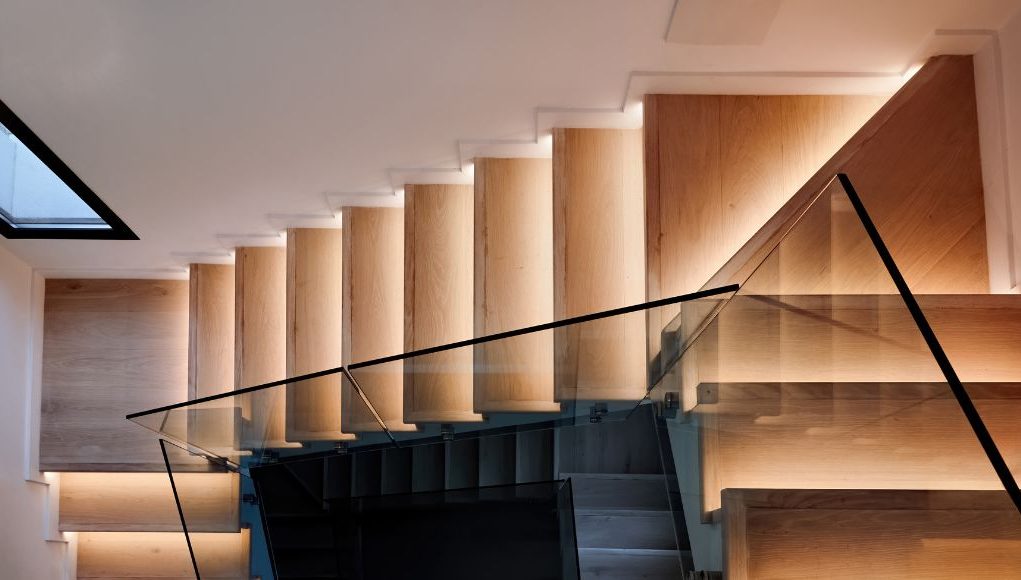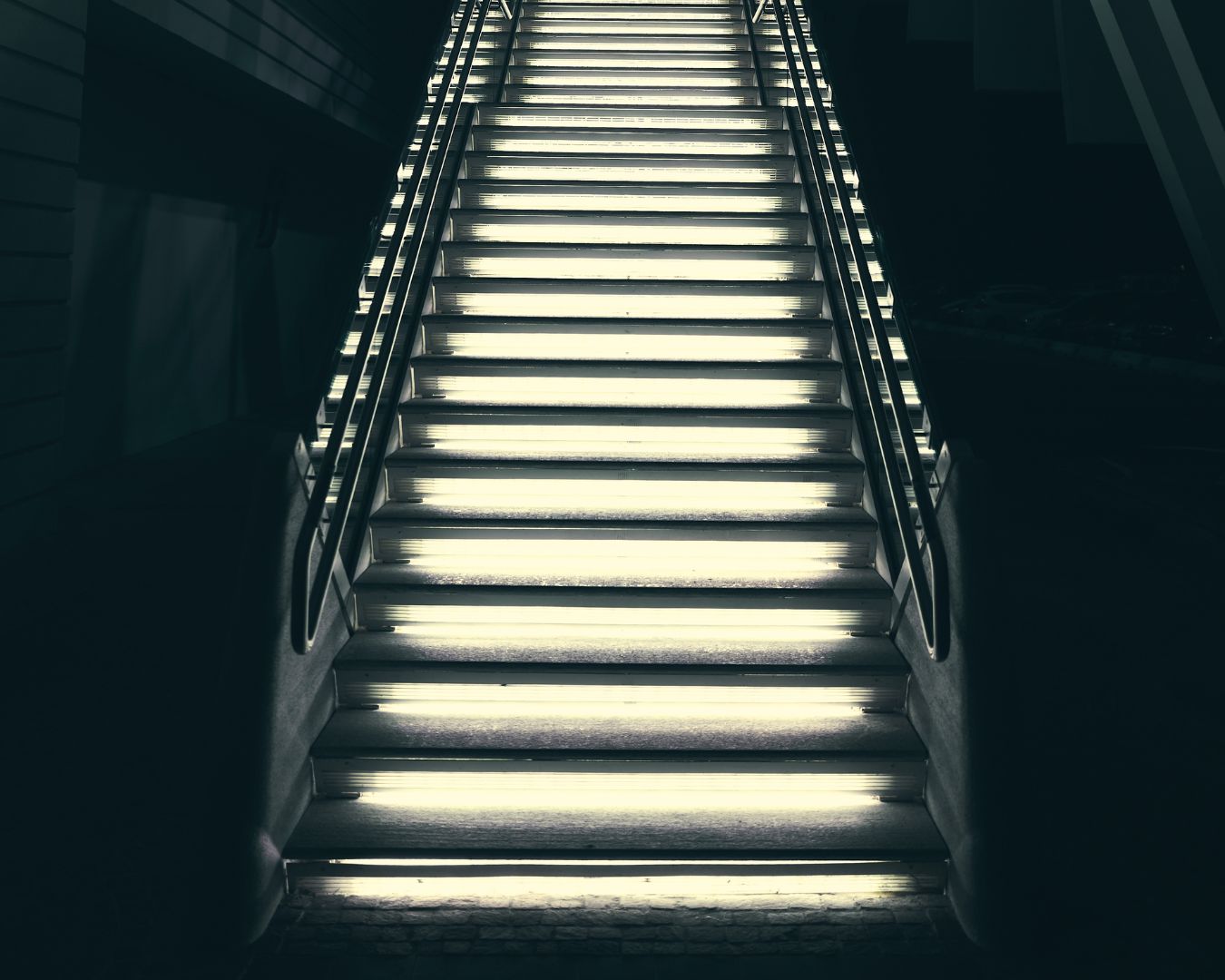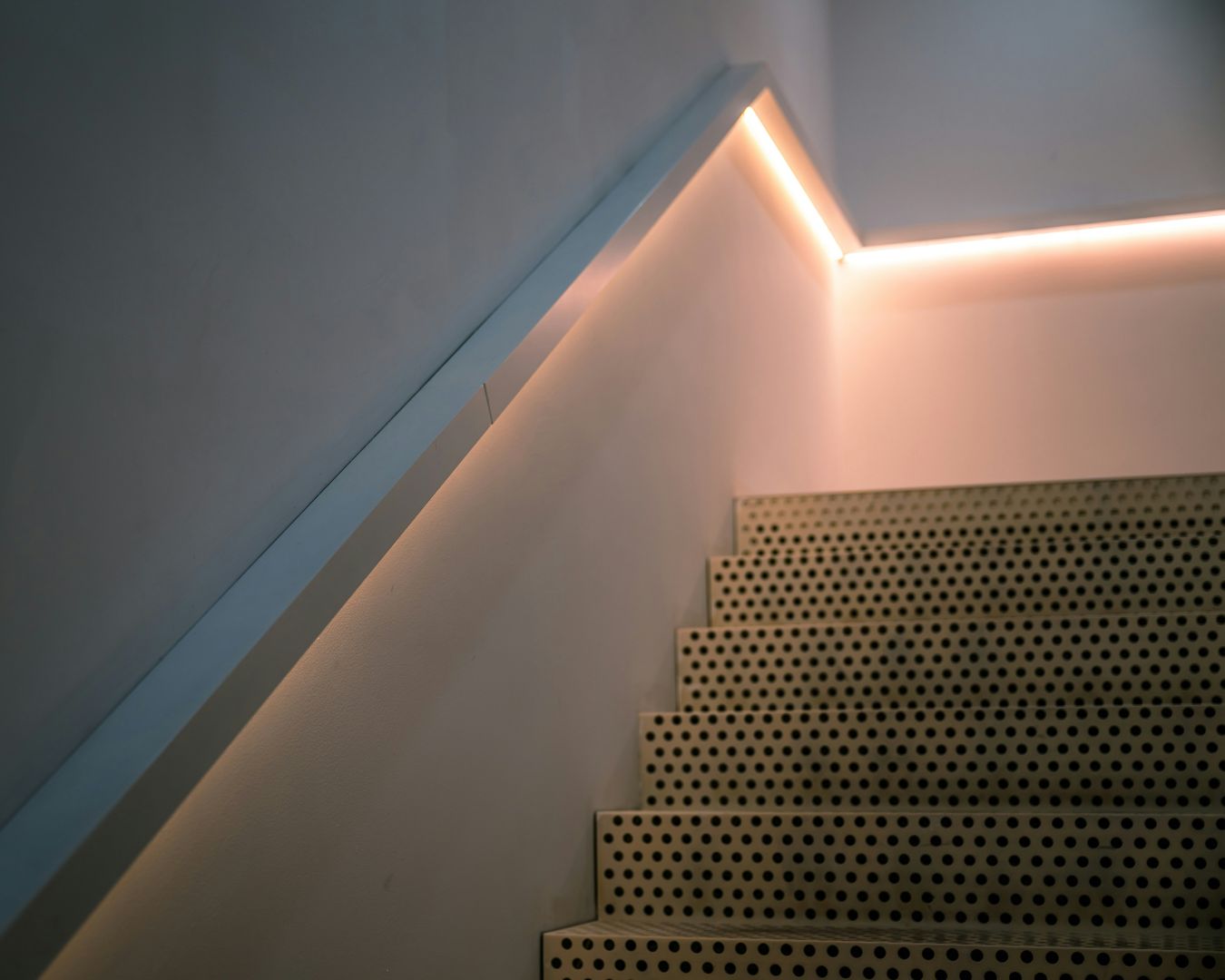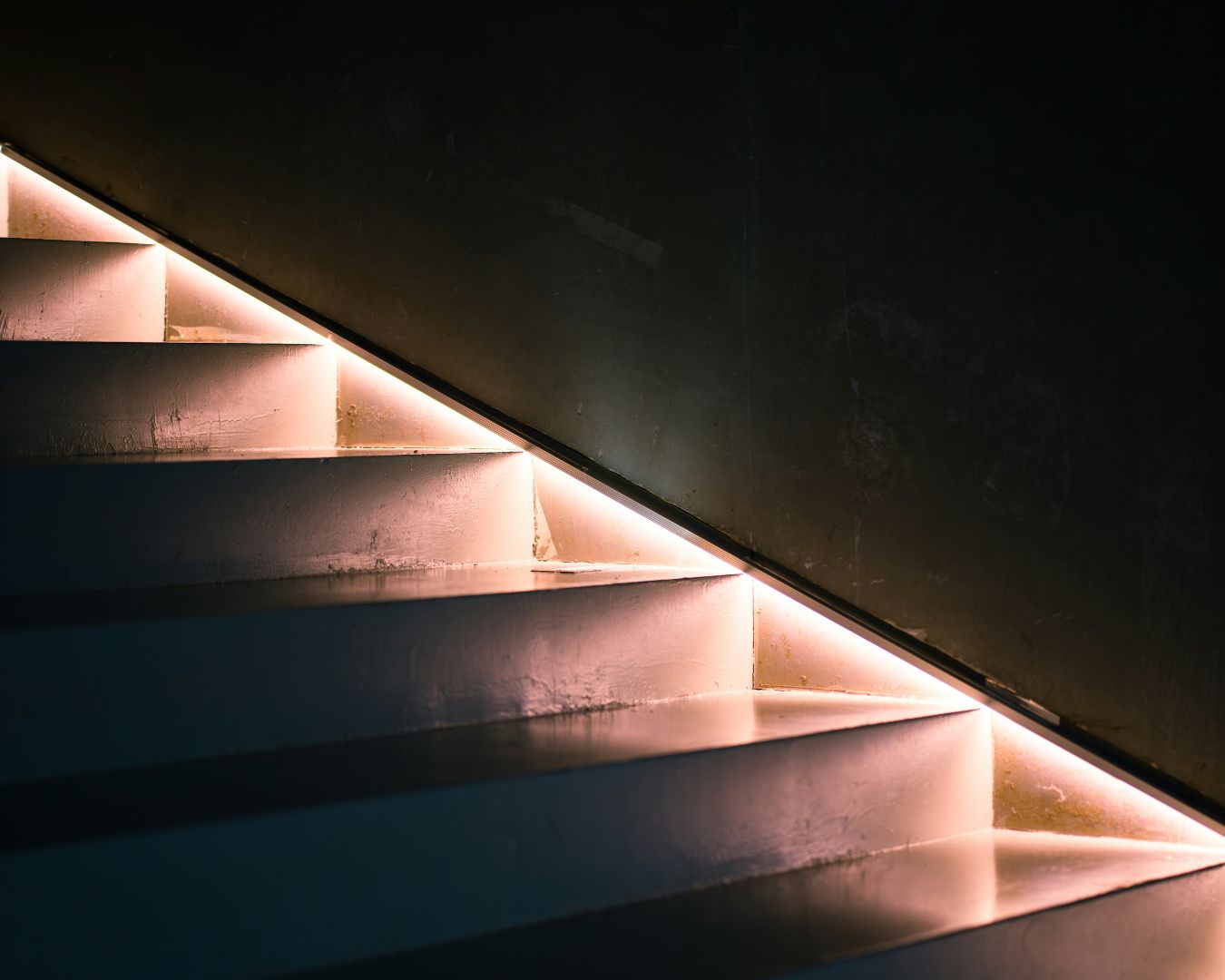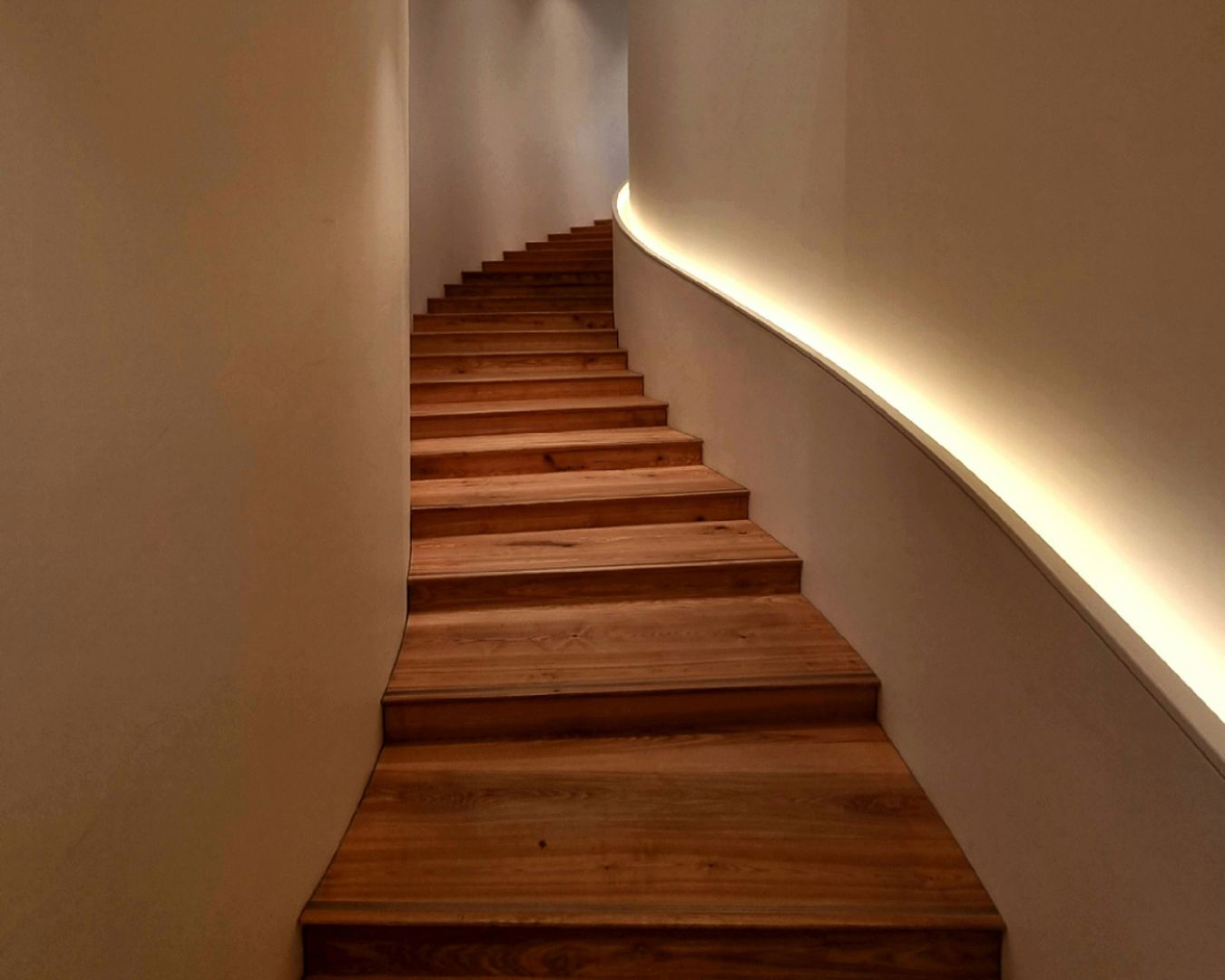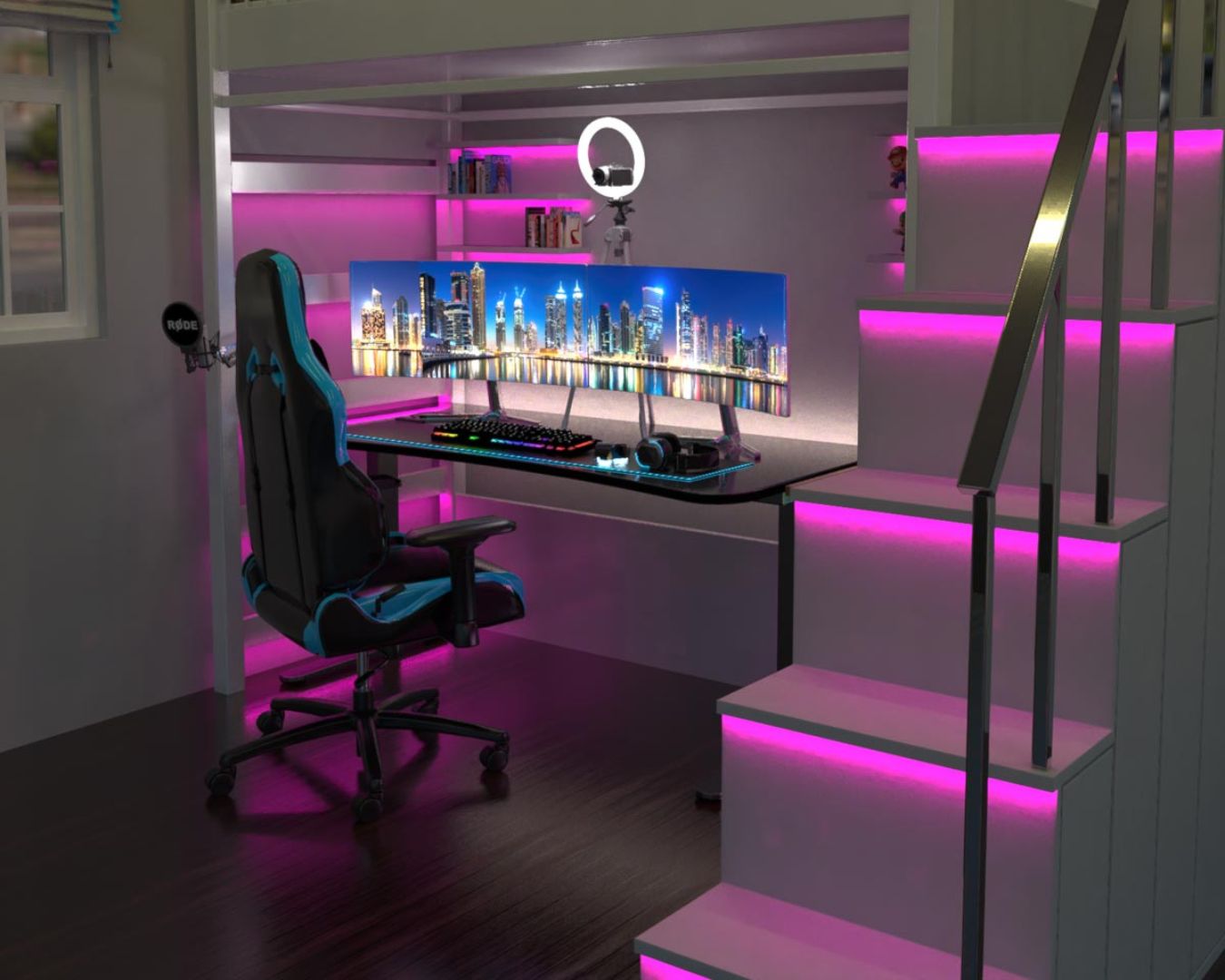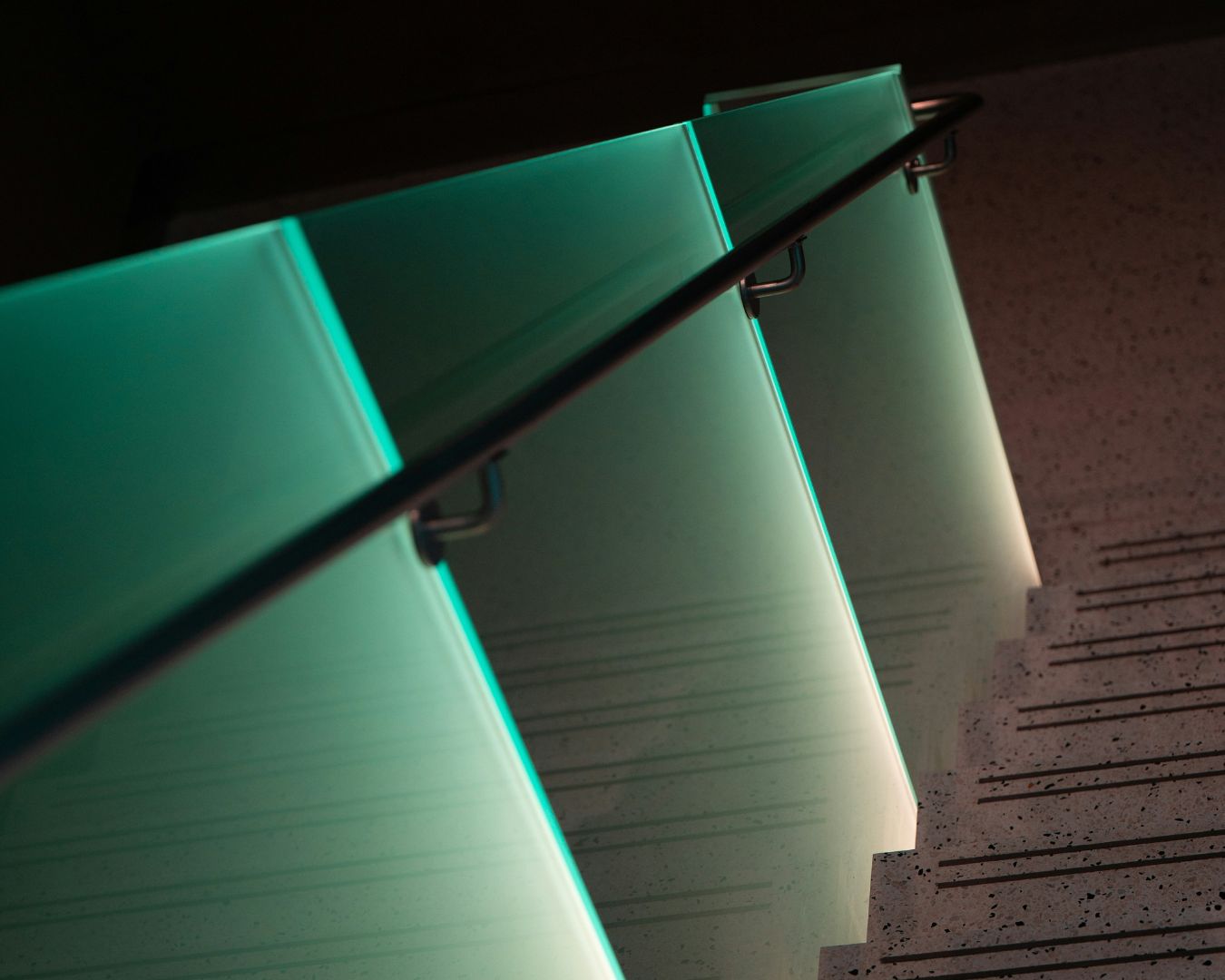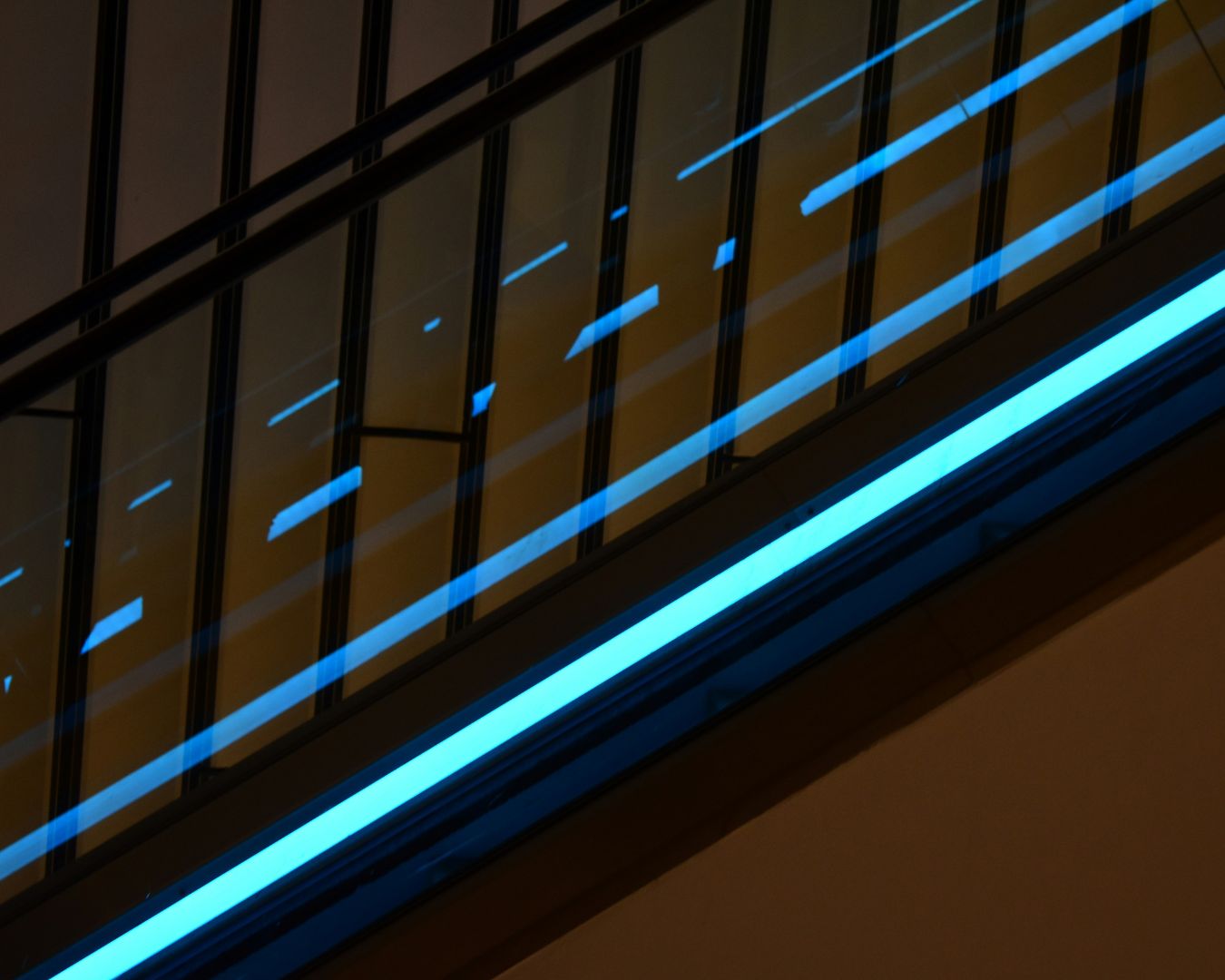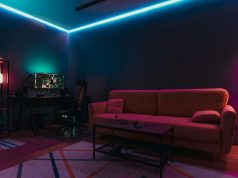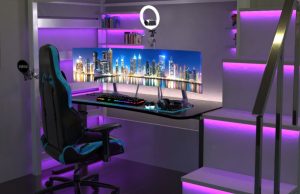LED strip lights are becoming a staple in home decor as their popularity continues to grow. With more and more people getting inspired to use them due to their high energy efficiency, long lifespan, and versatility, you can expect to see them more. Their slim, flexible design offers a wide range of customisation options, especially for creating ambient and accent lighting in any space, such as stairs.
Installing LED strip lights on your stairs improves visibility and boosts safety when going up or down. Dimmers and smart controls have also opened up a wide range of customisation options for enhancing your stars’ aesthetics.
Here, we’ll walk you through some design ideas you can try out with your staircases, proper installation tips, and safety considerations. But before that, it’s essential to know why you should use LED lights on that spot.
The Benefits of Using LED Strip Lights on Staircases
Aesthetic Appeal
Admit it. You’re reading this because you want your stairs to look better. (Hint: we all do!) Installing LED strip lights on your stairs gives it a modern, elegant look. And with LED’s brightness and colour options, you can create the ambience that suits your style. Warm and cosy, bright and joyous, or colourful and playful, you got it!
Safety and Functionality
It’s a given that having additional light on your stairs will improve visibility when going up and down, especially at night. LED strip lights serve as an extra safety feature for your stairs, reducing the risk of trips and falls.
Energy Efficiency
LED lights consume less power compared to traditional lighting. Plus, they’re long-lasting (up to 50,000 hours) and low maintenance, so you don’t even need to worry about replacement for a very long time. They’re the most cost-effective lighting option for your staircases.
Consider These When Choosing the Right LED Strip Lights:
With its growing popularity worldwide and the accompanying number of options to choose from, it’s no wonder that there are many things to consider before you take out your wallet and purchase LED strip lights (from your trusted LED light supplier, I hope). Here are the three crucial factors you need to consider:
Type of LED strips
Not all LED strip lights are made the same. There are two choices you need to make. First, choose between standard vs waterproof (IP65) strip lights. Consider the type of staircase for which you’re installing the strip lights. Most of the time, you’d only need the standard strips. But if there’s a high probability of water and moisture, opt for waterproof strip lights.
The main difference between the two, except for the IP rating, is that standard strip lights will usually be brighter than the waterproof ones, as the latter have an extra coating to achieve their high IP rating.
The second choice you need to make: single colour or RGB/RGBW. The single colour means precisely that: the strip light comes in a single, unchangeable hue. The RGB, on the other hand, has changeable colours, offering more flexibility for the ambient or mood lighting changes you want to make.
Brightness and Colour Temperature
Choosing the right lumens (brightness) plays two crucial roles for your lighting installation: adding safety and creating a desired mood. Having an adequate number of lumens makes it easier to see obstacles or any potential hazards that can cause a person to trip and fall. Lower and higher lumens also have different effects on the mood of the space, with lower ones being a bit more cosy and relaxing, while higher ones are more energetic and vibrant.
The colour temperature (measured in Kelvin) of an LED strip light can also have the same effect on your staircase’s “mood”. Warm white light (lower Kelvin) is a bit more relaxing and cosy. A cooler white light (higher Kelvin) is a bit more energising.
Smart Features
If you’re not big on customising your staircase lights and just want a steady, non-obtrusive light every time you go up and down, standard LED strip lights will do fine. There’s no need to spend extra quid on the added fancy technology. But if you want dimming, motion sensor, and app or voice control options for your stairs lighting, then get a smart LED strip light.
Creative Placement Ideas for Staircase Lighting
1. Under Each Stair Tread (recessed or surface-mounted)
This is probably the most common staircase lighting you’ll see. Install LED strip lights under each step of the stairs. This placement creates a floating stair effect.
2. Along the Handrail or Under Bannisters
This should be faster to install since there’s less cutting and bending of the LED strip light involved compared to the other placements. Installing the strip lights this way highlights the railing design and provides subtle lighting to the staircase.
3. Wall-Mounted Strips Following Stair Contour
Mount the LED strips along the wall following the steps of the stairs. This should create a sleek design that emphasises the staircase’s path and creates architectural interest.
4. Side Wall Lighting
You’ll often see hotels with this type of LED strip light placement. You install strip lights along the walls following the stairs for a decorative glow that adds a touch of class.
5. Step Nose (Edge) Lighting
Similar to the first one, but the strips are mounted under the nosing, the part of the step that extends over the riser. Provides a clear outline for each step while hiding the light from direct view.
6. Glass Panel Illumination
This works if your stairs have a glass balustrade. Install strip lights along the base to make the glass glow softly, adding a futuristic, high-end look.
7. Floating Stair Stringer Lighting
If your stairs have a visible stringer (the underside part that supports the stairs). Attach LED strips to the side or bottom of the stringer. This should create a striking silhouette effect on your stairs.
Installation Tips and Techniques
I know you’re excited to go and start working on your stair lighting right away, so here are some tips and tricks to ensure proper installation of your LED strip lights.
Planning and Measuring
Plan placements and measure the lengths of the strip lights you need. Plan poorly–or not at all–and you might end up having to live with a sloppy staircase lighting instead of the Instagrammable stairs you had in mind. Worse is that it could cost you time and money to redo it. Tip: Always take into account corners and obstacles when measuring.
Power source and wiring
Make sure to install your LED strip lights with the power supply (driver) close to the socket or any type of power source. Don’t make the mistake of installing the lights only to realise you mounted them backwards and must do it all over again. If you don’t know or are unqualified to do the wiring, get professional assistance from a certified electrician.
Mounting options
Do not rely on the pre-applied adhesive backing of your LED strips. They don’t usually last long. For better mounting, get a stronger adhesive to add on top of the pre-applied adhesive. Make sure to clean and dry the surface before installing, so you don’t compromise the adhesion of the tape.
When working with textured or uneven surfaces, using mounting clips is the best option.
DIY vs Hiring a Professional
When DIY-ing, always prioritise safety. And if unsure or unqualified, always get a professional to help you out. A qualified electrician who knows their way around LED strip lights would be ideal.
Conclusion
Lighting your stairs goes beyond just aesthetic (although that’s what we’re all here for). It’s also for added safety and security, combining aesthetics with functionality. There are several ways to light up your staircase, but always plan properly before installation to avoid any unwanted headaches.
LED strip lights, especially with strip lighting kits, are reasonably easy to DIY, but always make it a rule to get a qualified professional if you’re unsure. Always make safety a priority when working with lights.


